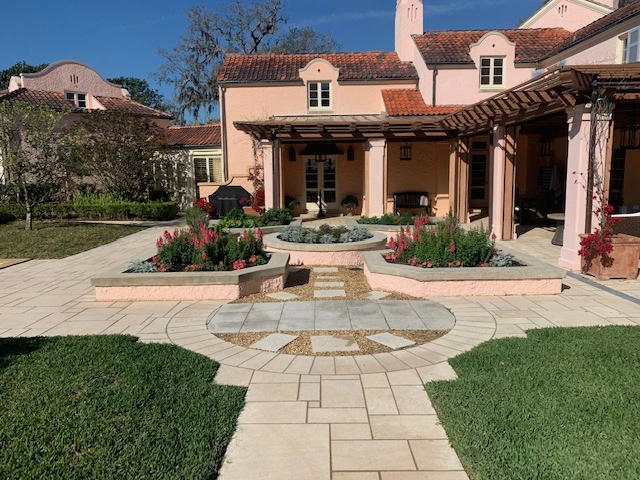Professional Landscaping Services in Bartow, Lakeland Highlands, Highland City, FL & Surrounding Cities
Our team can help you achieve the landscape of your dreams with our landscaping services.
At Evolve Contracting, we understand that every property owner has a different vision for their landscape, and we are here to help turn those visions into a reality with our professional landscaping services. Our team provides everything from landscape design to drainage and grading solutions to commercial and residential properties, as well as HOAs, in Bartow, Lakeland Highlands, Highland City, FL and throughout the nearby areas. We have served local property owners since 2010 and look forward to helping you next!
Landscape Design
If you're looking to invest in a landscaping project but want to see how the project will look when it's finished before you sign off on it, our landscape design service is just what you need. We can create a 3D design rendering of your project so you can see how your project will look when it's completed before the installation even begins.
Plantings & Softscapes
Whether you want to install new landscape beds on your property or renovate your existing ones - our plantings and softscapes service is just what you need. In addition to creating or renovating your landscape beds, we can also fill them with beautiful, eye-catching flowers that will take their aesthetics to the next level!
Annual Flowers
Let our team brighten up your landscape with our annual flower installation service. We offer a broad range of annual flowers that can be planted in your landscape beds to give them a pop of color! While we can install annual flowers in your landscape beds throughout the year, spring tends to be the most popular season to schedule this service!
Outdoor Lighting
Give your property a unique lighting display with our outdoor lighting service. From low-voltage LED lights to Bluetooth technology, our experts can provide you with energy-efficient lighting options that will bring your property to life at night.
New Construction Landscaping
If you're looking to establish your dream landscape from scratch, then our new construction landscaping service is for you. This service involves enhancing new construction properties via our landscaping and irrigation services.
View New Construction Landscaping
Sod Installation
Get a lush, green lawn instantly with our sod installation service. When you schedule this service, we will follow a thorough installation process that involves removing any existing vegetation before carefully installing your sod to give you a beautiful, new lawn!
Mulch Installation
We can install a mulch ground covering in your landscape beds to enhance their beauty and provide numerous health benefits to your plants! This service is exclusive to our customers enrolled in our lawn maintenance program.
Shrub Trimming & Pruning
When you schedule our shrub trimming and pruning service, we will trim your plants regularly to remove any overgrowth and prune them as needed for health purposes. Please note, this service is only available to customers that are enrolled in our lawn maintenance program.
Drainage & Grading
If you're dealing with flooding issues on your property, our drainage and grading service is just what you need. We can grade your property or install a variety of drainage solutions on it to redirect water away from your property.
Call us today to schedule any of our landscaping services!
At Evolve Contracting, we strive to exceed customer expectations with our high-quality landscaping services. With 13 years of experience under our belts, you can trust that you're in good hands when you work with us. We proudly serve commercial and residential properties, as well as HOAs, in Bartow, Lakeland Highlands, Highland City, FL, and throughout the surrounding areas. Call us today at (863) 537-7537 to schedule any of our landscaping services!



